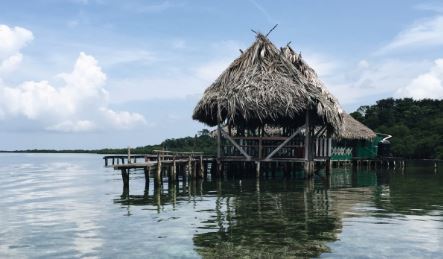
Is Natural Thatch Still Made of Green Roofing Materials?
building codesNatural thatch might be one of the most eco-friendly green roofing materials if the growing, harvesting, and maintenance of it hadn’t changed so drastically over time. The natural thatching industry was forced to change to meet consumer demand, modern fire codes and modern building codes. The fact is many of us no longer view natural thatch as a green roofing material, at least not when used commercially.
Changes To Agriculture
The first step away from eco-friendliness for thatch was the shift towards large-scale agriculture. Early last century, increased use of the combine harvester led to the invention of hybrids of grasses. These hybrids worked best with combines, but made stems shorter and more brittle. The same grasses used for food were no longer suitable for thatching. Consequently, thatch as a building supply became separated from the food crop. For the first time, the roofing materials were not a useful waste product of food crops. It had to be grown separately.
In other areas of the world, intense demand on the tropical palm industry led to the spread of the red palm mite. As pesticide use increases, environmental and health concerns grow. Already, workers report pesticide exposure, respiratory problems, and dermatitis. Plus, valid scientific concerns over the sustainability of palms in multiple regions increases.
Meanwhile, rivers that once produced water reed also fell victim to intensive farming. Farming water reed so intensely led to nitrate-damaged water reed supplies. While the reed grew faster to keep up with demand, stems weakened and reeds became brittle. Entire ecosystems that support wildlife, including migratory birds, have been directly impacted.
On the other side of the world, pili grass on Hawaiian islands suffered a great decline after three invasive African grasses moved in. Buffel grass, fountain grass, and Guinea grass choked it out. Growing pili grass for building materials could harm the major efforts underway to bring back Hawaii’s pili grass growth.
The Implementation of Building Codes
Natural thatch doesn’t work with building codes unless it’s been treated with chemicals. A variety of flame retardant and pesticide chemicals exist for treating natural thatch. Most products contain a proprietary mixture of chemicals. We feel that these chemicals prevent natural thatch from being green roofing materials for the eco-minded builder or designer, because the chemicals eventually run off the thatch and into the soil beneath or surrounding waters.
If you could treat natural thatch and have those chemicals stay on the roof, it would be a non-issue. The chemicals don’t stay on the roof though, they run off. Remember, many of these flame retardants double as pesticides. So, as those run off into the surrounding environment, soil microbes, insects, and animals risk exposure. We understand that some new flame retardant chemicals are listed as non-toxic to humans and animals. Well, just because a flame retardant product says it’s non-toxic to humans and animals, doesn’t mean it’s safe for soil microbes or delicate watersheds.
Green Roofing Materials
When labeling roofing materials “green roofing materials,” one of the first questions asked is, “Does harvesting or processing the roofing material affect the habitat of species within the ecosystem?” Resoundingly, yes. Commercialize natural thatching affects not only animals relying on the vegetation for food, nesting, and cover, but also directly affects the health of the actual grasses, reeds, and palm trees themselves.
When determining how green a roofing material is, it’s also standard practice to examine whether the growing, harvesting or use of the building material affects the surrounding soil and water. Without a doubt, modern, commercial-production of natural thatch used as roofing material for resorts, hotels, and other large projects worldwide affects the soil and water almost every step of the way.
Endureed Synthetic Thatch As Green Roofing Materials
Though efforts are underway in many areas to return the natural thatching industry towards sustainability, the market continues to grow steadily for all thatched roofing products. Some of these ecosystems are too delicate to wait on improved methods or environmental testing results as scientists examine the effects of newer flame retardants used on natural thatched roofs on the environment.
One of the most important reasons people choose Endureed synthetic thatch is because of our commitment to sustainability and the environment through our green roofing materials.
- We reduce waste because our products’ longevity and durability are unrivaled.
- We offer products partially made from recycled materials, lessening the amount of landfill waste, and lessening the amount of plastics in our oceans.
- Each of our synthetic thatch products is 100% recyclable.
- Endureed products help buildings achieve LEED certification.
- Our synthetic thatch shingles consist of incredibly stable material, eliminating risks of dangerous chemical runoff.
To learn more about Endureed synthetic thatch green roofing materials, please refer to this previous blog post.